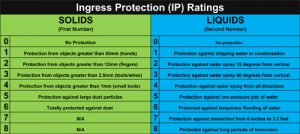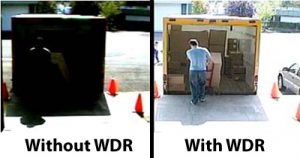Security Cameras
Check out our full line of security camera options. Whether you need an analog camera, HD-CVI – HD over coax, HD-TVI over coax or one of our IP cameras with resolutions up to 12 megapixels, we have you covered!
This gives our cameras that extra control and quality you want and need to give you the advantage in every situation.
We carry the highest quality Analog cameras, High Definition HD-CVI and HD-TVI Cameras as well as Network IP Cameras. To see the visual difference in these formats, check out our side by side comparison videos page. You will be blown away on how far our cameras have come in quality and detail.
Showing 1–15 of 65 resultsSorted by price: low to high
2MP HD Over Coax 24/7 Color with White LED 2.8mm Bullet Security Camera
Specifications
- Lens: 2.8mm Lens
- Max Resolution: 2MP
- IR Distance: 65 feet
- Audio: Built In Mic
- SD Card Compatible: No
- Perimeter Protection: No
- Object Detection: No
- Face Detection: No
- Face Recognition: No
- Smart Motion Detection: No
- LPR: No
Save 50%
8MP HD Fixed Lens Dome Camera
Specifications
- Lens: 3.6 MM
- Max Resolution: 8MP
- IR Distance: 98' FT
- Audio: None
- SD Card Compatible: No
- Perimeter Protection: No
- Object Detection: No
- Face Detection: No
- Face Recognition: No
- Smart Motion Detection: No
- LPR: No
Save 50%
5MP HD Fixed Lens Bullet | 24/7 Color with White LED
Specifications
- Lens: 3.6 MM
- Max Resolution: 5MP
- IR Distance: 98' FT
- Audio: None
- SD Card Compatible: No
- Perimeter Protection: No
- Object Detection: No
- Face Detection: No
- Face Recognition: No
- Smart Motion Detection: No
- LPR: No
Save 25%
2MP HD Over Coax 24/7 Color with White LED 2.8mm Dome Security Camera
Specifications
- Lens: 2.8mm Lens
- Max Resolution: 2MP
- IR Distance: 65 Feet
- Audio: None
- SD Card Compatible: No
- Perimeter Protection: No
- Object Detection: No
- Face Detection: No
- Face Recognition: No
- Smart Motion Detection: No
- LPR: No
Save 25%
2MP HD Over Coax 4 in 1 Turret Camera w/ 2.8mm Lens
Specifications
- Lens: 2.8mm Fixed Lens
- Max Resolution: 2MP
- IR Distance: 20m (65.62ft)
- Audio: None
- SD Card Compatible: No
- Perimeter Protection: No
- Object Detection: No
- Face Detection: No
- Face Recognition: No
- Smart Motion Detection: No
- LPR: No
ELITE 2MP HD Fixed Lens 4-in-1 Bullet W/ 2.8mm
Specifications
- Lens: 2.8MM
- Max Resolution: 2MP
- IR Distance: 30 m (98.4 ft
- Audio: None
- SD Card Compatible: No
- Perimeter Protection: No
- Object Detection: No
- Face Detection: No
- Face Recognition: No
- Smart Motion Detection: No
- LPR: No
5MP Fixed Lens HD Turret Dome
Specifications
- Lens: 2.8mm Lens
- Max Resolution: 5MP
- IR Distance: 40m
- Audio: Built In Mic
- SD Card Compatible: No
- Perimeter Protection: No
- Object Detection: No
- Face Detection: No
- Face Recognition: No
- Smart Motion Detection: No
- LPR: No
8MP HD Fixed Lens Dome Camera
Specifications
- Lens: 2.8mm Lens
- Max Resolution: 8MP
- IR Distance: 20-30m
- Audio: None
- SD Card Compatible: No
- Perimeter Protection: No
- Object Detection: No
- Face Detection: No
- Face Recognition: No
- Smart Motion Detection: No
- LPR: No
Save 25%
ELITE 8MP HD Fixed Lens 4-in-1 Dome W/ Built in Mic
Specifications
- Lens: 2.8mm Fixed Lens
- Max Resolution: 8MP
- IR Distance: 98 FT
- Audio: Built In Mic
- SD Card Compatible: No
- Perimeter Protection: No
- Object Detection: No
- Face Detection: No
- Face Recognition: No
- Smart Motion Detection: No
- LPR: No
8MP HD Moto Lens Bullet
Specifications
- Lens: 2.8-12mm Lens
- Max Resolution: 8MP
- IR Distance: 65 feet
- Audio: None
- SD Card Compatible: No
- Perimeter Protection: No
- Object Detection: No
- Face Detection: No
- Face Recognition: No
- Smart Motion Detection: No
- LPR: No
Save 25%
ELITE 4MP IP 2.8mm Lens Vandal Dome Camera with Built in Mic
Specifications
- Lens: 2.8mm Fixed Lens
- Max Resolution: 4MP
- IR Distance: 98 ft
- Impact Protection: IK10
- Audio: Built In Mic
- SD Card Compatible: Micro SD Card ( up to 256Gb can be installed)
- Perimeter Protection: Yes
- Object Detection: No
- Face Detection: No
- Face Recognition: No
- Smart Motion Detection: No
- LPR: No
1. What types of security cameras do you offer?
We offer a wide range of security cameras, including:- HD Security Cameras: High-definition cameras for clear video quality.
- IP Security Cameras: Network-based cameras with resolutions up to 12MP.
- Bullet Cameras: Long-range cameras for outdoor and indoor use.
- Dome Cameras: Compact, discreet cameras for indoor or outdoor use.
- PTZ Cameras: Cameras with pan, tilt, and zoom functionality.
- Hidden Cameras: Covert cameras for discreet surveillance.
- License Plate Cameras: Designed to capture license plates, even in low light.
2. What is the difference between IP cameras and analog cameras?
- IP Cameras: Transmit video over a network, offering higher resolution and advanced features like remote access.
- Analog Cameras: Use coaxial cables, offering reliability and cost-effectiveness but with lower resolution compared to IP cameras.
3. What resolution options are available for your cameras?
Our cameras range from 2MP (1080p) to 12MP (4K and higher). Higher resolutions provide more detailed images, which is ideal for clear identification and wide-area coverage.4. Are your cameras compatible with any DVR or NVR?
Compatibility depends on the camera series:- HD Cameras work with HD DVRs.
- IP Cameras are compatible with NVRs. We recommend matching cameras with recorders from the same series (e.g., Sibell or Elite) for optimal performance.
5. Do you have cameras suitable for outdoor use?
Yes, we offer weather-resistant cameras with IP66/IP67 ratings that are designed to withstand rain, dust, and extreme temperatures.6. Do your cameras have night vision?
Most of our cameras feature infrared (IR) night vision, allowing them to capture clear footage in complete darkness. Some cameras also offer full-color night vision using built-in LEDs.7. Can I access my security cameras remotely?
Yes, all our IP cameras and recorders support remote access via mobile apps or web browsers. You can view live streams, playback footage, and adjust settings from anywhere with an internet connection.8. What features should I look for in a security camera?
Consider the following features based on your needs:- Resolution: Higher resolution for detailed footage.
- Night Vision: Infrared or full-color night vision for low-light conditions.
- Field of View: Wide-angle lenses for larger areas.
- Audio: Built-in microphones for audio recording.
- PTZ Functionality: Pan, tilt, and zoom for dynamic monitoring.
- Storage Options: Onboard storage or NVR/DVR compatibility.
9. What is Power over Ethernet (PoE), and do your cameras support it?
PoE allows cameras to receive power and data over a single Ethernet cable, simplifying installation. Many of our IP cameras are PoE-compatible and can be easily integrated into a PoE network.10. Do you offer warranties and technical support for your cameras?
Yes, all our cameras come with a warranty (typically 1-3 years) and free technical support. Our team can assist with setup, troubleshooting, and system optimization.11. Do you have cameras that can detect motion or specific objects?
Yes, some of our advanced IP cameras offer features like:- Smart Motion Detection: Detects movement and reduces false alarms.
- Object Detection: Recognizes specific objects, such as vehicles or packages.
- Perimeter Protection: Detects breaches in specific zones.
12. What is the difference between bullet and dome cameras?
- Bullet Cameras: Long and cylindrical, ideal for outdoor use due to their range and visibility.
- Dome Cameras: Compact and discreet, often used indoors or in areas where vandal resistance is important.
Security Camera Terminology
Sometimes the terms that are used when describing the specifications of security cameras can be confusing. Here are some common terms associated with surveillance cameras and their definitions. As always, if there are any features or specifications that you don't understand on any of our surveillance cameras, please give us a call. We are happy to help you! Analog Cameras: Most security surveillance cameras are analog. This means that, although they digitally process the images into video, they then transmit the video in analog over coax or Siamese cable. The advantage to analog is that it can be transmitted over long distances and then reconstituted back into digital video at the receiving end. IP Cameras: Some cameras transmit their video over IP based networks. These are considered IP or network cameras. They can be easily integrated into an existing network infrastructure, although the impact on the existing bandwidth must be analyzed before doing so. For larger security surveillance installations using IP cameras, a separate network should be configured due to the bandwidth intensive nature of these cameras. There is also a limitation of 100 meters or approximately 300 feet that a network cable can be run. Auto Iris: This term refers to the capability of a camera to open or close the iris of the lens depending on the lighting conditions. Just like the human eye, when exposed to bright light, the iris closes to keep from being blinded. And in low light conditions, the iris opens wide to allow as much light as possible to enter. The animation below illustrates how the iris functions.
|
 |
 |
 |
 |

































